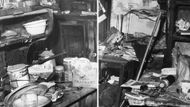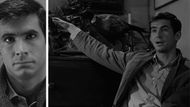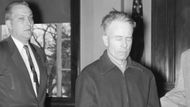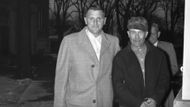Ed Gein may not have racked up the body count of the world's most notorious killers like Bundy, Dahmer, Kemper, or Gacy, but few names have left a bigger scar on pop culture. The quiet handyman from Plainfield, Wisconsin, transformed horror forever not through the number of his crimes, but through the shocking nature of his obsessions.
His gruesome hobbies included digging up graves of women, crafting furniture from human remains, and preserving body parts, and this is what turned his farmhouse into a real-life nightmare.
When Ryan Murphy's Netflix anthology series titled Monster dives into Gein's twisted legacy, it's not just revisiting another true-crime case; it's unpacking how one man's compulsions and obsessions changed the way we see evil on screen.
Gein's grotesque imagination became the foundation for some of Hollywood's most haunting creations, from Norman Bates in Psycho to Leatherface in The Texas Chain Saw Massacre. Gein's real-life horrors didn't just inspire horror cinema, but they redefined what the term "monster" means.
Pathological mourning and the mind behind exhumations: Ed Gein’s descent into obsessive necrophilia & more
Ed Gein's story begins not with murder, but with mourning. After the death of his mother, Augusta Gein in 1945, the lonely farmer began spending nights in Plainfield's cemeteries, guided by nothing but grief and obsession.

According to biographer Harold Schechter, who spoke with Rolling Stone,
"Something almost archaic broke through in Gein's psyche — he was plunged back into a world of human sacrifice and trophies."
That descent led him to exhume (unearth/take out) freshly buried women who reminded him of his mother.
Inside his decaying and crumbling farmhouse, investigators later found what can only be described as a literal house of horrors: Skulls being used as bowls, faces turned into masks, a belt made of nipples, and chairs and lampshades made out of human skin.
Gein confessed that many of these "decorations" came from dead bodies he dug up at night. His purpose wasn't purely violence but rather obsession. He wanted to remake his mother's body, to have himself be able to walk back into the world he lost when she died.
Schechter noted that the first graves Gein disturbed "formed a semi-circle around his mother's own," an eerie reminder of how his love and madness were closely connected.
From true crime to an archetype: The pop cultural mythology of the “Butcher of Plainfield”
When the news broke out in 1957 about what police had found inside Ed Gein's disorganized farmhouse, America was horrified but also in a very twisted way captivated. However, it wasn't long before that fascination and captivation found a way to make itself into fiction.

Author Robert Bloch, who was living just miles from Plainfield at the time, was inspired by the case's eerie details and wrote the very iconic Psycho. Ever since then, Bloch was intrigued by the notion of a killer hiding in plain sight as someone capable of existing quietly within a town where everyone believed they knew each other.
The story of Norman Bates, the motel manager with a mother fixation, became a sensation and Alfred Hitchcock's 1960 adaptation of Psycho starring Anthony Perkins turned horror on its head.
Now, before Psycho, cinematic horror came from places like Dracula from Transylvania and mummies from Egypt. However, Gein is the one who changed that. He made horror feel more human. He made it believable.
After Psycho, the monsters weren't old living or supernatural beings. They were people who lived next door, hidden behind smiles, someone who would babysit your child and someone living in a farmhouse next to you.
From Leatherface to Buffalo Bill: Transforming Ed Gein’s psychosis into horror cinema
Hollywood's utmost obsession with Ed Gein didn't end with just Psycho. His disturbing 'craftsmanship and artistry' inspired the raw brutality of The Texas Chain Saw Massacre (1974), where Leatherface hides behind masks of stitched human flesh and decorates the Sawyer family home with bones of the people they've/Leatherface has killed.

Director Tobe Hooper didn't adapt Gein's story literally, but his imagery with the furniture made of skin and this is how the sense of isolation came straight from the Butcher of Plainfield's world.
Years later, The Silence of the Lambs (1991)took over Gein's influence even further. Buffalo Bill, the film's petrifying killer, kidnaps women and makes a "woman suit" from their skin which is only a horrifying echo of Gein's real-life experiments.
Chloe Manon of Savannah's Graveface Museum told Rolling Stone that;
"Most of what Gein did was about possession, not killing. He wanted to have the remains, not the act."
That eerie contrast we see between murder for thrill and murder for control is what makes his influence so influential in horror cinema.
The humanization of horror in pop culture: How Ed Gein redefined monstrosity in imagination and horror cinema
Before Ed Gein, horror movies within any culture were about supernatural creatures like vampires, werewolves, mummies, or even witches.

After him, horror on its own became psychological. People started to come to a realization that human beings could be far more menacing and frightening than monsters in films and literature. It is Gein's crimes that altered the genre's focus from the supernatural to the people — from the graveyard to farm houses.
He turned the ordinary into the terrifying. Films that were inspired by Gein's crimes and arts blurred the line between horror and reality. Norman Bates' obsession with his mother, Leatherface's mutilated creations made from the skin of people he's murdered, and Buffalo Bill's twisted artistry all stem from Gein's twisted attempts to understand love and loss.
Even decades later, his influence hasn't faded and in and in 2025, Ryan Murphy has revisited Gein's life with his anthology series now titled — Monster: The Ed Gein Story.
Schechter put it best by saying;
"Every now and then, a real-life figure comes along who resembles a fairy-tale monster so closely they achieve mythic status. In Gein's case, it turned out to be true."
Ed Gein didn't just haunt his victims but he has haunted the entire culture of horror cinema. His grave-robbing rituals, his skin-made furniture, and his obsession with his mother didn't stay confined to Wisconsin; they crawled into cinema, into the world's collective nightmares.
Netflix's Monster reopens the coffin on how one man's madness reshaped horror storytelling. Gein's legacy proves that true terror doesn't always need vampire fangs or a Dracula castle but sometimes it literally wears a dead human face, lives in a small town, and builds lampshades out of skin. That's the horror Ed Gein gave the world.
Stay tuned to SoapCentral for more.
